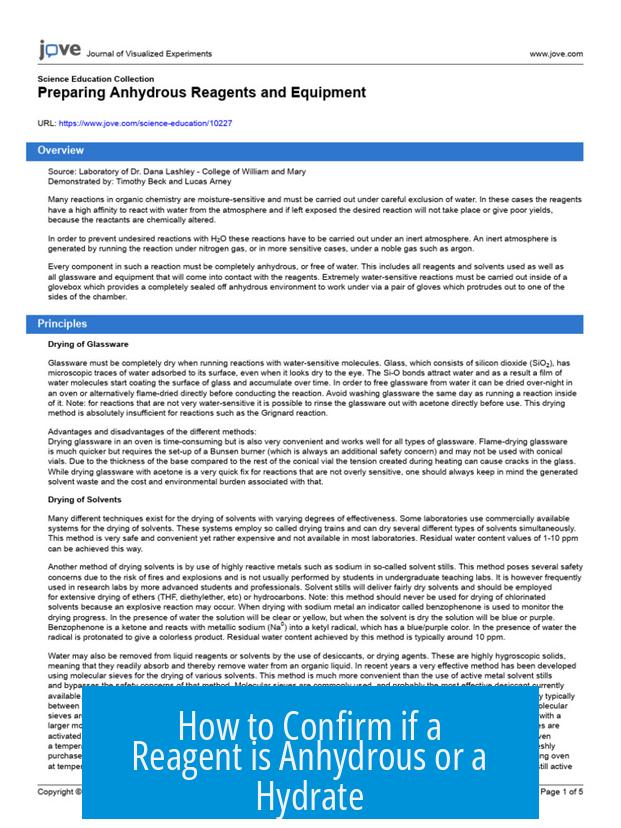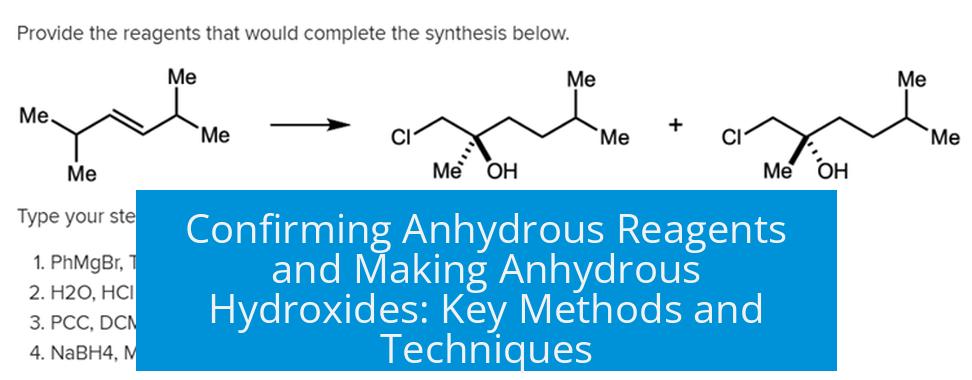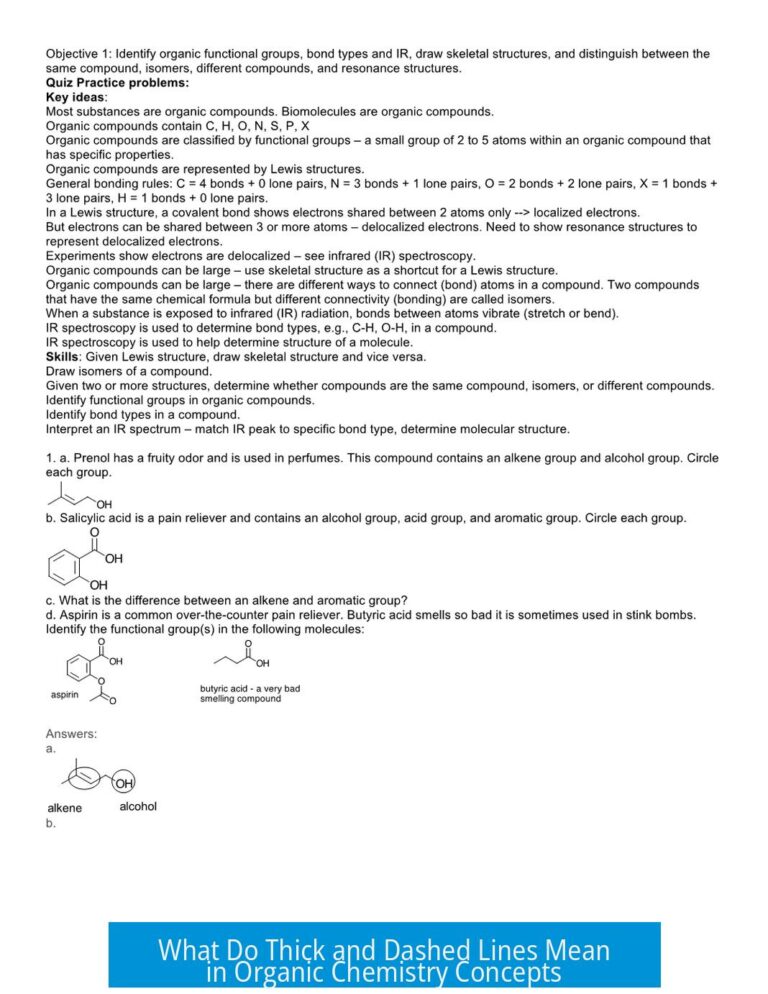How to Confirm if a Reagent is Anhydrous or a Hydrate

Confirming whether a reagent is anhydrous or a hydrate involves assessing the presence of water of hydration through methods like heating, titration, solubility analysis, and visual observation.
1. Heating and Mass Change
Heating the sample gently below 200°C releases water of hydration. One can measure the mass before and after heating. Loss of mass indicates dehydration. Comparison against known thermogravimetric data helps avoid breakdown of the hydroxide to oxide. This method offers direct quantification of hydration.
2. Titration
Titration provides an indirect chemical measure influenced by water content. Variations in titration results can indicate whether hydration affects the reagent’s concentration or reactivity.
3. Solubility Differences
The solubility of hydrated and anhydrous forms typically differs. For example, a monohydrate can differ in solubility by about a factor of two compared to its anhydrous counterpart. Testing solubility in a controlled manner aids identification.
4. Visual Observation
Heating a small sample in a test tube can produce visible water vapor if it contains bound water. Observation of condensation on a cooler section of the tube is a qualitative sign of hydration.
5. Comparison with Known Samples
Running the above tests concurrently on a known anhydrous sample provides a baseline for interpreting results accurately, confirming hydration status.
6. Exposure to Atmospheric Moisture
Reagents exposed to air commonly absorb moisture, forming hydrates. Understanding storage and handling history helps predict hydration state.
How to Make Anhydrous Hydroxides
1. Controlled Heating to Remove Water
Heating hydroxides below 200°C drives off water of hydration without decomposing the hydroxide. Mass loss measurements confirm dehydration. Consulting literature for thermogravimetric behavior prevents exceeding temperatures that cause conversion to oxides.
2. Minimizing Contamination
Post-dehydration, hydroxides easily absorb atmospheric carbon dioxide, reducing purity by forming carbonates. Working in controlled atmospheres or using desiccators helps maintain anhydrous purity.
Summary of Key Points
- Heating and measuring mass loss confirms water of hydration.
- Titration and solubility differences serve as secondary indicators.
- Visual water vapor detection offers quick qualitative evidence.
- Comparisons with known anhydrous samples improve reliability.
- Heating below 200°C removes water without decomposition.
- Prevent CO2 contamination to maintain anhydrous purity.
How can I confirm if a reagent is anhydrous or a hydrate by heating?
Heat the sample below 200°C and measure mass change. Water of hydration is lost as vapor, reducing mass. Compare to known data to avoid decomposition into oxides.
Is titration effective to distinguish anhydrous and hydrated reagents?
Yes. Titration can reveal differences in sample composition that indicate presence of water in hydrates versus anhydrous forms.
How can solubility tests help identify hydrates?
Hydrated reagents usually show different solubility than anhydrous ones. For example, some monohydrates differ by about a factor of two in solubility from anhydrous forms.
What visual cue indicates water release when heating a hydrate?
Heating a small sample in a test tube may cause water vapor to appear as condensation on the cooler parts of the tube, confirming presence of hydration water.
How to prepare anhydrous hydroxides without loss of purity?
Heat hydroxides gently below 200°C to remove water of hydration. Avoid exposure to air and carbon dioxide to prevent purity loss during the process.




Leave a Comment